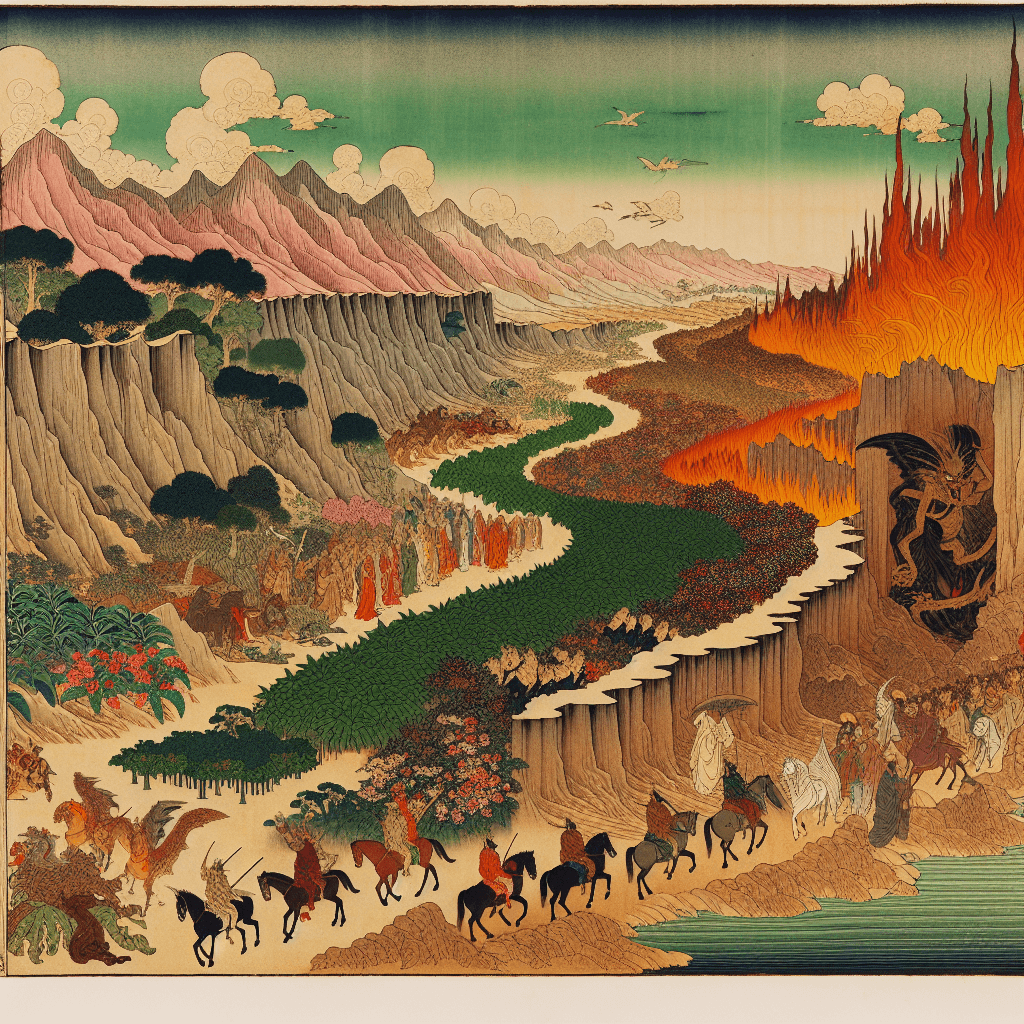Esoteric and Mystical Dimensions: The Valley of Hinnom as a Liminal Space
syndu | Feb. 15, 2025, 5:36 a.m.

Modern-Day Relevance: The Valley of Hinnom in Contemporary Jerusalem
The Valley of Hinnom, known in Hebrew as Gei Hinnom, is a site steeped in historical and religious significance. Situated on the southwestern outskirts of Jerusalem, this valley has long been associated with eschatological themes and cultural narratives. Today, the Valley of Hinnom continues to hold relevance in contemporary Jerusalem, serving as a focal point for archaeological initiatives, tourism, and local identity.
Archaeological Initiatives
In recent years, the Valley of Hinnom has been the subject of numerous archaeological excavations. These efforts aim to uncover artifacts and structures that shed light on Jerusalem’s ancient history. Archaeologists have revealed layers of historical occupation, from Canaanite settlements to remnants of the Second Temple period. The valley’s archaeological significance provides valuable insights into the cultural and religious evolution of the region, attracting scholars and researchers from around the world.
One notable discovery within the valley is the Ketef Hinnom scrolls, a pair of silver amulets dating back to the First Temple period. These amulets are inscribed with the oldest known texts that appear in the Hebrew Bible, featuring the Priestly Blessing from the Book of Numbers. Such findings underscore the Valley of Hinnom’s role as a repository of ancient knowledge and a testament to Jerusalem’s rich heritage.
Tourism and Cultural Resonance
The Valley of Hinnom currently serves as a major tourist destination. It's particularly popular due to its historical context and enduring spiritual symbolism. The scenic beauty and archaeological sites offer a unique glimpse into Jerusalem's past, while its symbolic associations continue to resonate with contemporary audiences. Guided tours and educational programs provide visitors the chance to engage with the valley's multifaceted narrative, fostering a deeper appreciation for its historical and cultural significance.
Given its proximity to Jerusalem's Old City, the Valley of Hinnom makes a convenient stop for tourists exploring the surrounding historical landmarks. Visitors can walk along the valley’s trails and take in breathtaking views of the hills and ancient city.
Local Identity and Initiatives
For Jerusalem’s residents, the Valley of Hinnom is not merely a historic location; it holds significant weight in the city's cultural identity. Its centuries-old reputation as a site of judgment and redemption strongly resonates with the prevailing themes in Jerusalem’s spiritual landscape. Continuing local initiatives strive to preserve and promote the valley's cultural heritage, ensuring that its historical significance is both recognized and celebrated.
Various community events, art installations, and cultural festivals are often held in the valley, offering people a platform to delve into their shared history and explore the valley's integral role in shaping Jerusalem’s identity.
Conclusion
The Valley of Hinnom’s modern-day relevance extends beyond its historical and religious associations. It serves as a cultural cornerstone of Jerusalem’s history. Archaeological discoveries, tourist activities, and local initiatives continue to inspire reflection and exploration. Delving into the valley’s contemporary significance, we can see its influence in shaping Jerusalem’s spiritual and cultural identity.
By examining the Valley of Hinnom’s continuous presence in contemporary Jerusalem, we are reminded of the power of history and heritage to inform our understanding of the present. The valley stands as a testament to the resilience of cultural memory and the ongoing quest for meaning and connection in an ever-evolving world.





